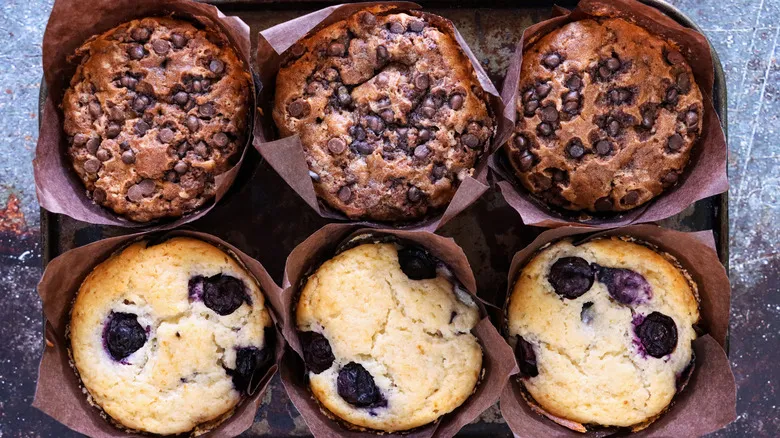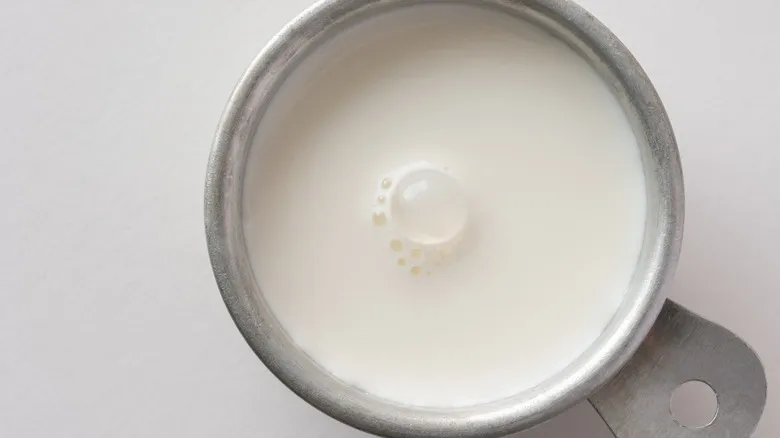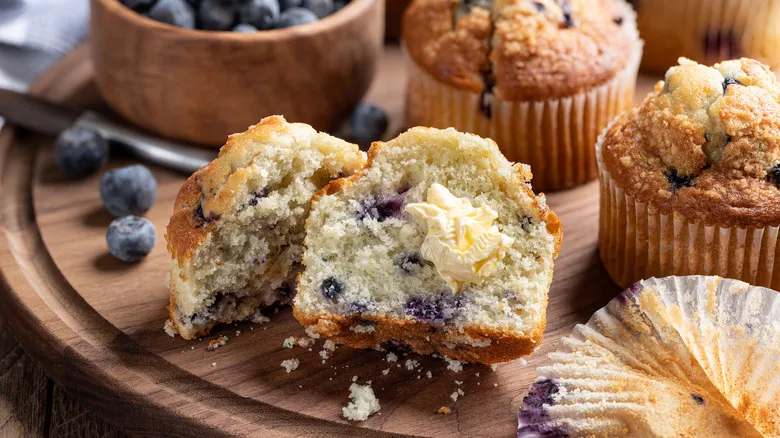Room temperature butter keeps muffins light and airy

Butter serves a multitude of purposes in baking, and its effects can be modified by adjusting its temperature. Whether you're aiming for flakiness or lightness, a stick of butter can deliver; you just need to either warm it up or chill it. For instance, incorporating cold butter into your batter in small cubes will allow it to melt during baking, creating airy pockets in your treats. This is why cold butter is ideal for pastries, scones, and pie crusts—it helps form layers in the dough and results in a flaky texture.
On the other hand, if you cream room-temperature butter with sugar and mix it into your batter, the sharp edges of the sugar crystals carve out tiny pathways in the butter. This process makes your baked goods extra fluffy, allowing air to fill those spaces. This method is commonly used in muffin recipes, as the light and tender outcome is precisely what you desire. To bring your butter to room temperature, simply leave it on your kitchen counter for at least an hour before you start baking, and you'll be all set.
Other things to keep in mind when baking muffins

If a batch of muffins doesn't require creamed butter, many recipes may opt for simple cooking oil instead. These liquids blend seamlessly into muffin batter, resulting in a more cohesive mixture. Melted butter can solidify after baking, leading to denser muffins rather than the desired light and fluffy texture. For this reason, some bakers prefer using oil as a precaution. Additionally, many neutral cooking oils have a mild flavor that won't interfere with the taste of your muffins. Therefore, if you're preparing muffins where a strong butter flavor isn't ideal, oil could be the perfect substitute for achieving soft, airy baked goods. Ultimately, the choice depends on your preferences.
Lastly, another common mistake that can lead to overly dense muffins is over-mixing the batter. Similar to using cold butter by mistake, over-mixing can make your muffins too cake-like by eliminating the air pockets that keep them light and fluffy. To ensure your muffins remain airy, mix the ingredients until just combined, then stop. This is a frequent baking error, so keep it in mind. If everything goes well, your muffins should turn out perfectly.
Recommended

The Closest Substitution For Heavy Cream In Cooking And Baking

Baking Soda Can Remove Labels From Glassware Without A Trace

This Is The Best Place To Proof Bread In Your Kitchen

Gel Vs Liquid Food Coloring: Which Is Best For Your Cookies?
Next up

